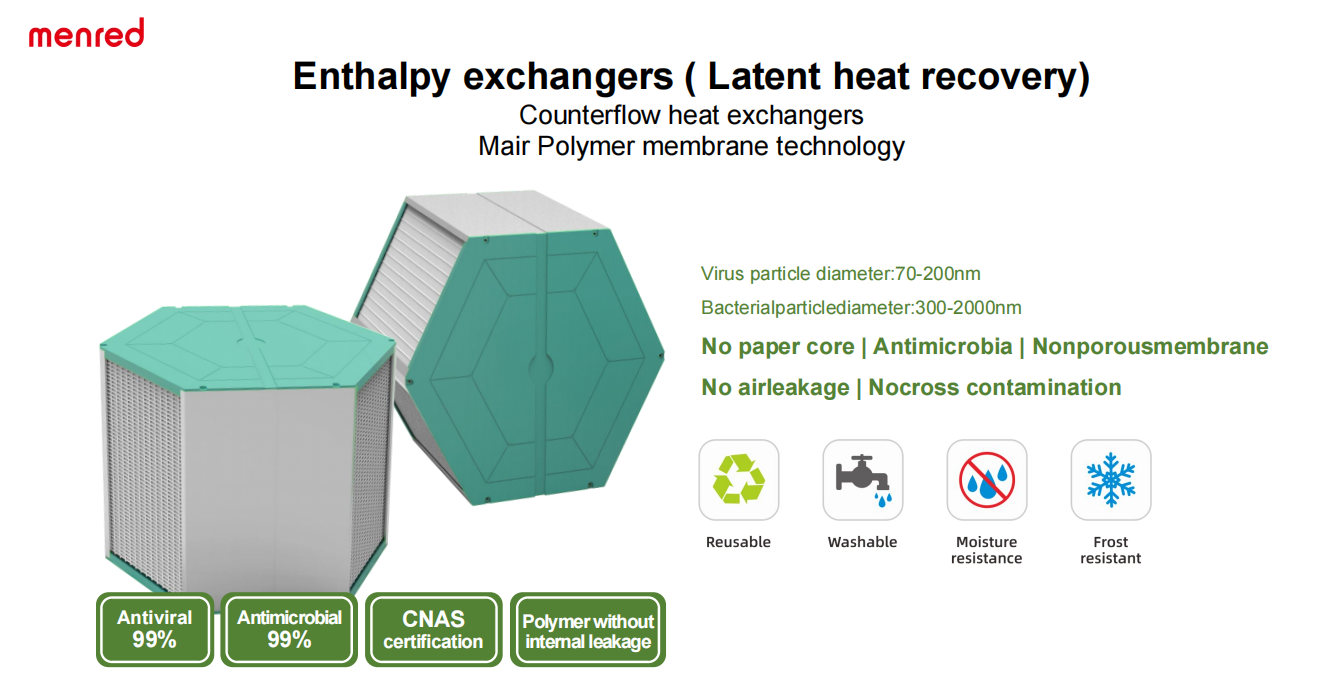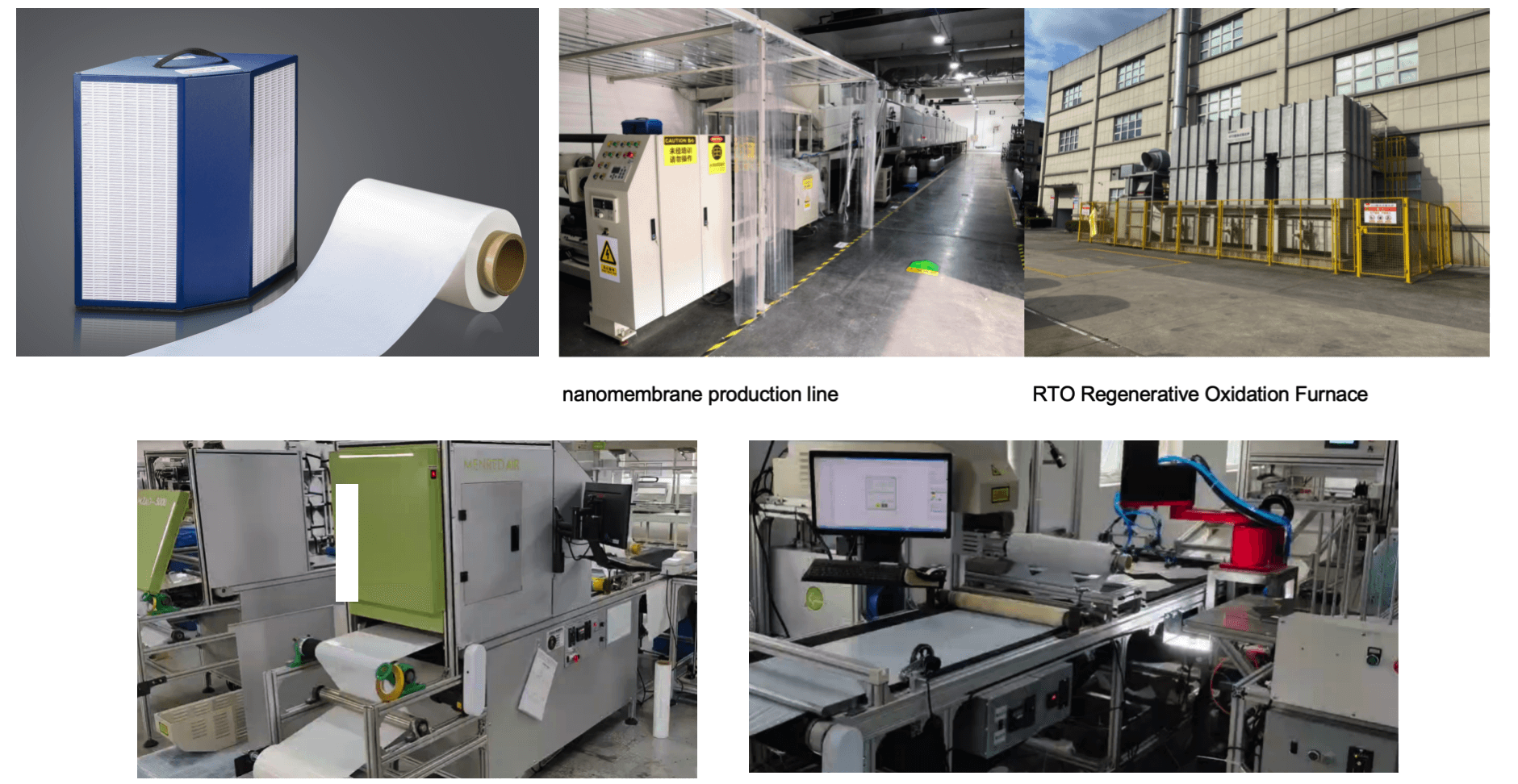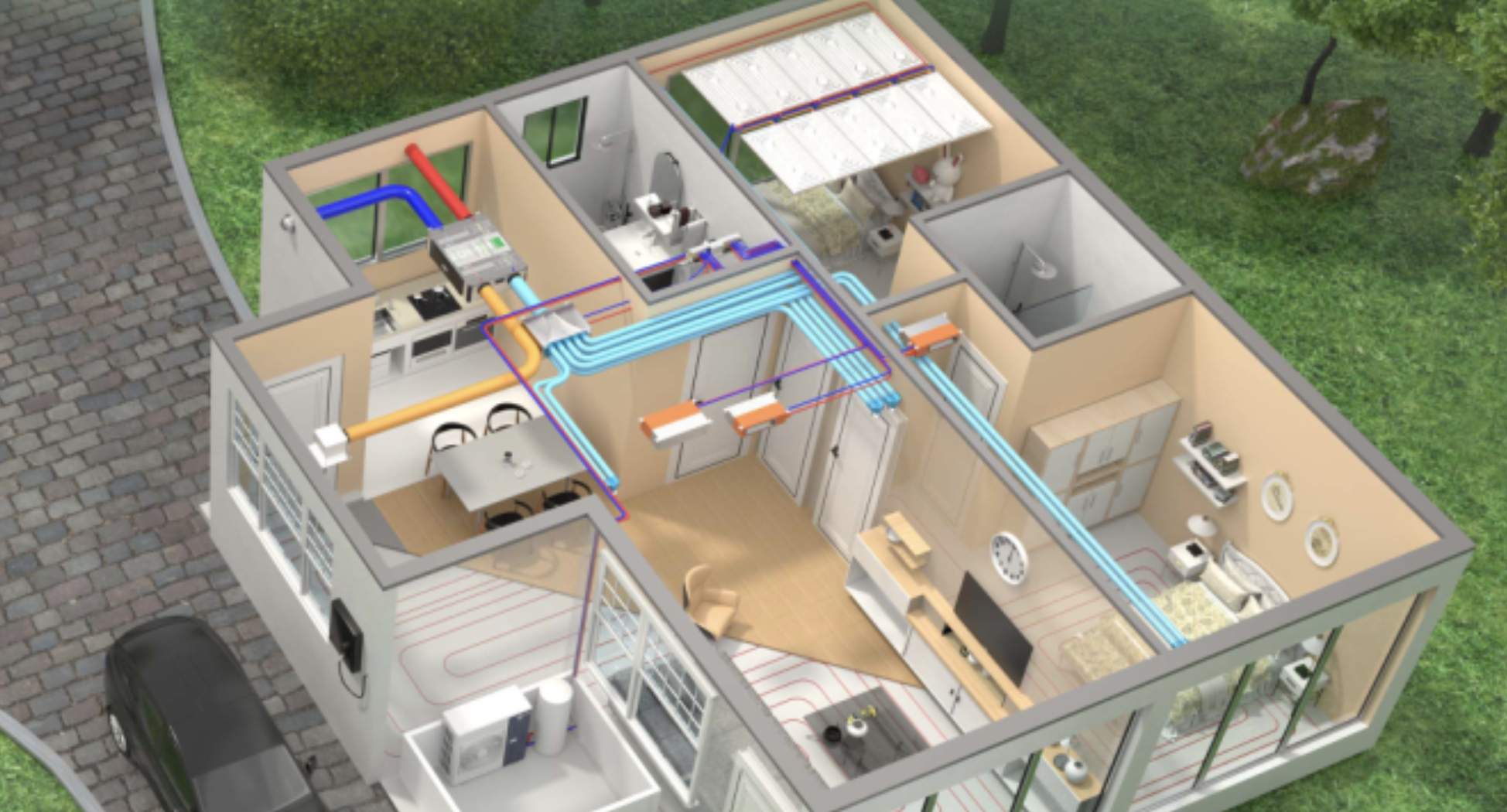How does an ERV recover moisture
views: 5052 time: 2024-10-30
views: 5052 time: 2024-10-30

An Energy Recovery Ventilator (ERV) recovers moisture through a process called enthalpy exchange. The ERV core has a specialized material that allows water vapor to transfer between incoming and outgoing air streams. Here's how it works:
1. Exchange of Air Streams: The ERV brings in fresh outdoor air while expelling stale indoor air. These two air streams pass through the ERV core in close proximity but remain separate.
2. Moisture Transfer: The ERV core uses a permeable membrane that allows water vapor to pass through while blocking other particles. When warm, humid air passes near cool, dry air, water vapor naturally moves from the more humid air stream to the less humid one, balancing the humidity levels between them.
3. Energy Exchange: In addition to moisture, heat energy is transferred from the warmer to the cooler air stream. This simultaneous heat and moisture exchange helps maintain indoor humidity and temperature levels without overtaxing the HVAC system.
4. Selective Transfer in Varying Seasons:
- Summer: ERVs transfer moisture from incoming warm, humid air to the cooler, drier outgoing air, helping dehumidify the incoming air before it enters the indoor space.
- Winter: The ERV allows moisture from the outgoing warm air to transfer to the incoming cold, dry air, preventing overly dry indoor conditions.
This moisture exchange helps maintain comfortable humidity levels indoors, reducing the need for additional humidification or dehumidification, which conserves energy and improves comfort.
MENRED ERV core workshops: From membrane to ERV cores, all in one manufacture

Energy Recovery Ventilation (ERV) is a ventilation system that exchanges indoor and outdoor air while capturing energy (in the form of both heat and moisture) from the outgoing air and using it to pre-condition incoming air.
ERVs are widely used in residential and commercial buildings, as well as industrial plants, to improve indoor air quality and reduce the energy required to heat or cool fresh air brought into the building.
Key Aspects of Energy Recovery Ventilation (ERV)
1. Air Exchange: ERVs bring fresh outdoor air into the building while exhausting stale indoor air, ensuring a steady supply of oxygen-rich air and reducing indoor pollutants.
2. Energy Savings: By capturing and reusing energy from outgoing air, ERVs reduce the amount of energy needed to condition incoming air.
3. Moisture Transfer: ERVs also balance humidity by transferring moisture between the incoming and outgoing air streams. This makes them particularly effective in regions with high humidity, helping prevent excess dryness in winter and excess moisture in summer.

Applications of ERV Systems
ERVs are commonly used in:
- Residential buildings (especially energy-efficient or airtight homes) to manage air quality without excessive energy costs.
- Commercial buildings with high occupancy or stringent indoor air quality requirements, like offices, schools, and hospitals.
- Industrial facilities where managing air quality and humidity is essential.
Advantages of ERV Systems
- Enhanced Indoor Air Quality: ERVs ensure continuous fresh air, reducing indoor pollutants and allergens.
- Energy Efficiency: By reclaiming heat and moisture, ERVs reduce the energy load on HVAC systems.
- Humidity Control: The moisture transfer helps stabilize indoor humidity levels, improving comfort and reducing reliance on separate dehumidifiers or humidifiers.
- Reduced Heating/Cooling Loads: Pre-conditioned air reduces the burden on heating and cooling systems, potentially extending their lifespan.
Energy recovery ventilator(ERV) vs. Heat Recovery Ventilation (HRV)
Feature | Energy Recovery Ventilator (ERV) | Heat Recovery Ventilator (HRV) |
Main Function | Transfers both heat and moisture between air streams | Transfers only heat, no moisture transfer |
Humidity Control | Maintains balanced humidity, ideal for both humid and dry climates | More suited for dry climates where humidity control isn't required |
Application | Ideal for humid climates or spaces needing balanced humidity | Common in colder, dryer climates where humidity transfer is less crucial |
Energy Efficiency | Typically more efficient in varying climates | Effective for heat recovery but lacks moisture management |
Comfort Impact | Balances temperature and humidity | Only balances temperature, may result in drier air indoors |
In summary, ERVs are more versatile than HRVs due to their ability to manage both heat and moisture, making them a good fit for regions where humidity control is as crucial as temperature control.